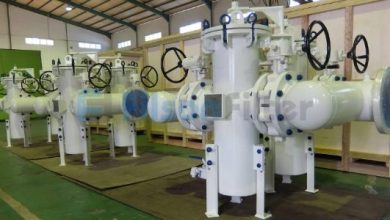Corporate FD Rates: Best Strategies for Risk Management

Fixed Deposits (FDs) are generally the safest and least risky investment opportunity that offers assured returns with lesser risk. Among various fixed deposit schemes, Corporate Fixed Deposits (Corporate FDs) are the most preferred by investors aiming for returns above the norm given by conventional bank fixed deposits. Corporate FD rates are determined based on the financial condition of the company, prevailing market forces at the time, and investment duration. However, as in any investment, risk mitigation is necessary while selecting corporate FDs. This article explores effective methods of risk minimization with an appropriate understanding of corporate FD rates.
What Are Corporate Fixed Deposits
Corporate Fixed Deposits are financing tools issued by corporate and non-banking finance companies (NBFCs) to raise money. Bank FDs, which are backed by regulatory bodies such as the Reserve Bank of India (RBI), are different from Corporate FDs, as they carry a greater level of risk because they tend to be heavily dependent upon the financial soundness of the issuing company and its reputation. But in order to offer this increased risk, Corporate FD returns are also higher compared to bank FDs.
Important Features of Corporate FDs:
- Increased Returns: The rates for Corporate FD are usually 7%–10% per year, which is relatively higher than banks, especially for long tenor.
- Flexible Tenors: The FDs typically have tenures of 1 year to 5 years.
- Credit Ratings: Credit rating agencies such as CRISIL and ICRA study the risk involved in corporate FDs to help investors.
For example:
– If corporate FD is offering 9% interest per annum, and an investor is investing ₹1,00,000 for 5 years. The amount received at maturity (calculating by compound interest) would be approximately:
M = P(1 + r)^n
Where:
– M = maturity amount
– P = original amount (₹1,00,000)
– r = annual interest rate (9% or 0.09)
– n = time period (5 years)
M = 1,00,000 × (1 + 0.09)^5 = ₹1,53,862 (approx.)
This shows the high return potential in terms of bank deposits.
How to Invest in Fixed Deposits, Including Corporate FDs?
Investing in Corporate FDs is usually a well-settled procedure like traditional fixed deposits. The procedure is as follows:
- Credit Rating Analysis: Begin by verifying the credit rating offered by agencies like CRISIL or CARE Ratings for the corporate firm issuing the fixed deposit. A AAA or AA+ rating indicates higher safety, and lower ratings indicate moderate to high risk.
- Corporate FD Rate Comparison: Different companies offer varying rates of interest depending on their repute, liquidity needs, and market situation.
- Select Tenures of Investment: Select an FD tenure most appropriate to your investment horizon—short term tenures for liquidity and long term tenures for optimal use of compounding interest.
- Complete KYC Process: Investors must furnish their identity proof, address proof, and other KYC details while making application.
- Watch Payment Options: Opt for payment options like ECS or post-dated cheques for regular interest payment or cumulative deposit.
Risk Management Techniques in Corporate FDs
While Corporate FDs offer good returns, they are not without risk. Sound risk management techniques can minimize exposure and enhance returns.
1. Check Credit Risk
The corporate company’s financial well-being is the determining factor of the safety of your investment. For instance:
– A CRISIL AAA rated company has always been in good financial shape, cutting down on investment risk.
– A riskier firm can offer corporate FD rates of 11% but carries higher credit risk.
Dig deep in the background to validate the firm’s balance sheet, debt ratio, and payment history before investing.
2. Diversification
Don’t put all your money into a single firm FD, even if it offers high rates. Invest across many firms, industries, and tenors to contain risk concentration. For example:
– If one has ₹5,00,000 to invest, break it up between three Corporate FDs with different tenures and ratings:
– ₹1,50,000 in a 2-year FD earning 9% interest
– ₹2,00,000 in a 3-year FD earning 8.5% interest
– ₹1,50,000 in a 5-year FD bearing interest at 9.5%
This way, there is balanced risk and liquidity availability.
3. Keep Interest Payout Options Under Check
Corporate FDs offer two alternatives:
– Cumulative Interest: Interest is accumulated on the principal and is paid at maturity.
– Non-Cumulative Interest: Interest is paid regularly (monthly, quarterly, or yearly).
Suing periodical payments can be a go-safe approach if the corporate entity is under a financial crunch during the term of the issue.
4. Know Liquidity Risks
Corporate FDs come with lock-in periods usually pre-defined, and there can be a ban on early withdrawal or charges for the same. Plan your liquidity needs ahead of time so that money does not get unnecessarily tied up for a longer duration.
5. Tax Implications
Interest earned on corporate FDs is taxable under the income tax slab of the investor. It impacts the net return. Assume
– An investor earns ₹40,000 per year as interest on a corporate FD that is in the 20% tax slab. The post-tax return is:
₹40,000 – (₹40,000 × 20%) = ₹32,000
Keep the post-tax returns in mind while investing.
Safety and Risks of Corporate FDs: Key Points
Corporate FD rates are highly appealing, but their safety is based on several factors like the health of the company, regulatory compliance, and market conditions.
Example of Risk Management:
Scenario:
– ₹2,00,000 invested in a corporate FD at a rate of 9% per annum for 3 years.
– If the company defaults after 2 years, the investor risks losing part or the entire amount of principal subject to recovery proceedings.
Recommended strategy:
Invest only a portion of the portfolio in corporate FDs and maintain a diversified portfolio of investments like government bonds, mutual funds, or traditional FDs.
Conclusion
Corporate FDs are a right choice for investment for those seeking to earn more than the returns offered by the traditional fixed deposits. The catch lies in being aware of the corporate FD rates, taking into account the risk factors in terms of credit rating and credit standing, keeping track of liquidity requirements, and diversifying the basket of investments. Interest commitments, taxation aspects, and the company’s financial credit must also be taken into consideration in your investment plan.
Summary:
Corporate Fixed Deposits (Corporate FDs) are an option to make the investors gain more than the fixed deposits of banks. The rates of fixed deposits are based on the company’s health and the market situation, ranging from 7%–11% per annum. Corporate FDs are not without risk since they rely on the issuing firm’s credit worthiness.
Adhering to sound risk management entails:
- Credit Rating Analysis: AAA ratings signify higher security.
- Investment Diversification: Dispersion of money across companies and maturities in order to reduce risk.
- Monitoring Interest Payment: Utilizing periodic payments to create liquidity and safety of funds.
- Awareness of Liquidity Constraints: Don’t keep money that you might need sooner.
- Balance of Tax Implications: Think through after-tax return before investing.
Disclaimer
This is general information and not a financial advisory. All the advantages and disadvantages have to be weighed and compared by the investors, professional advice has to be used, and the risks need to be analyzed and weighed heavily before investing in the Indian financial system or investing in the corporate fixed deposits.



